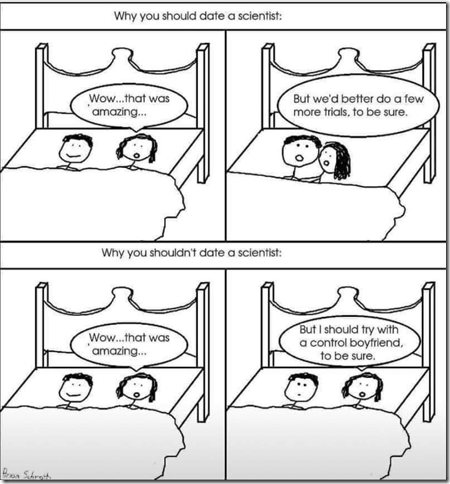Never ascribe to a conspiracy that which can be adequately explained by unplanned financial self-interest.
Porn is not a Jewish conspiracy to sap and impurify our precious bodily fluids, okay?
It’s a market correction for the gap between the male demand for sexual release, and the female supply of desirable and willing partners. You know, a market correction? That thing that happens in the free market? You remember the free market, right?
It’s that thing conservatives praise occasionally, but immediately turn against every time it points out a gap between their ideals and the reality on the ground.
People are just making money selling porn to horny men. That’s all it is.
But what conservatives are never, never asking themselves is, why are there so many horny men around? Why is there such a demand for porn, when it’s transparently obvious that no man in the world prefers porn to an attractive and enthusiastic female partner (or two)?
No, they never ask themselves that question because it’s easier to scold men than to address issues which would require them to take on someone with actual political power.
Look, when a man hits puberty, he starts getting horny. He can hold off doing anything about that for a little while, because he’s young, easily indoctrinated, and he’s still figuring it all out anyway. But pretty soon, he’s going to be driven to do something about that, and not all the lectures about sin that you can muster are going to stop him.
So why are men turning to pornography?
Because sex with a preferable partner is unavailable to them. Duh.
Conservatives uttered not a peep when boomers fucked the economy so no one could afford to buy a home, or raise children, until their late twenties or early thirties. Conservatives uttered not a peep when women wanted to leave the home and compete in the workforce, delaying marriage to build their careers. Conservatives uttered not a peep when women wanted to stop cooking food, and remained silent when the stores filled with pre-packaged factory slop made from processed corn and soybeans, and packed with sugar, causing an obesity epidemic.
Conservatives actively opposed availability of contraceptives at every opportunity, and refused to compromise at all on abortion.
Conservatives sat idly by while feminists took over the culture and taught women to hold men in contempt.
And on and on it went, until now, we’re reduced to landscape where only the top 5% of women are as attractive as the average woman of 50 years ago, and only the top 5% of men are desired, admired, or respected by women at all, and things have gotten so bad that young men will pay for naked pictures of attractive women because that is the closest they can get to the real thing, and conservatives’ solution is… scold young men some more? Ban porn?
Great.
Fan-fucking-tastic.
Because attacking the supply side worked sooooo well with drugs, didn’t it?
Conservatives are so goddamn dumb that they spent decade after decade fighting a “war on drugs” that they could never win, while ignoring the leftists quietly gutting the economy and fucking up everyone’s quality of life.
Thereby ensuring an ever-increasing supply of people so frustrated and miserable that porn and fentanyl sounded like an improvement over their daily lives.
Conservatives, please have this tattooed on your foreheads, backwards, so you can read it every morning in the mirror:
Demand creates supply. Supply does not create demand.
If you want to get rid of something, you must reduce the demand for it. If you want to get rid of the demand for something unhealthy, you must supply sufficient quantities of a superior alternative which is healthy.
A healthy society must have a healthy and available outlet for all human appetites, or it will cease to be a healthy society.
I swear, if you guys had spent half the energy fighting income taxes, socialism, feminism, government entitlements, and the erosion of the American quality of life that you spent on porn, abortion, and men in dresses pretending to be women, then you would have a lot less to cry about right now.
But you didn’t wanna upset women or boomers, and you didn’t want to cut federal spending, and you certainly didn’t want to confront the crass material appetites of human nature instead of retreating and burying your nose in a bible instead.
So now you are the Stupid Party. Which still makes you superior to the Evil Party, for all the good that does us.
But every two years, I’m still left with the unexciting choice between Stupid Party and Delusional Party, and things aren’t getting any better.
You’re nice guys, you really are. Your hearts are in the right place. I just wish your brains were in the right place, too.
Devon Eriksen @Devon_Eriksen_
Posted on X May 23, 2024



